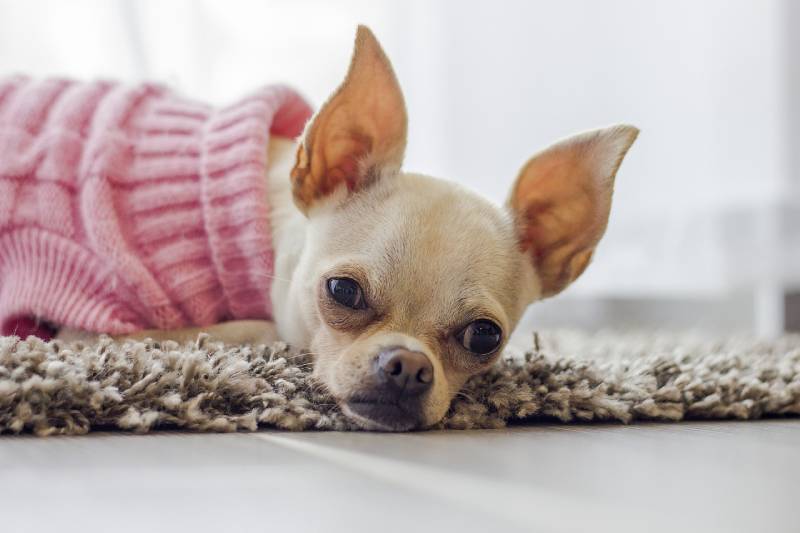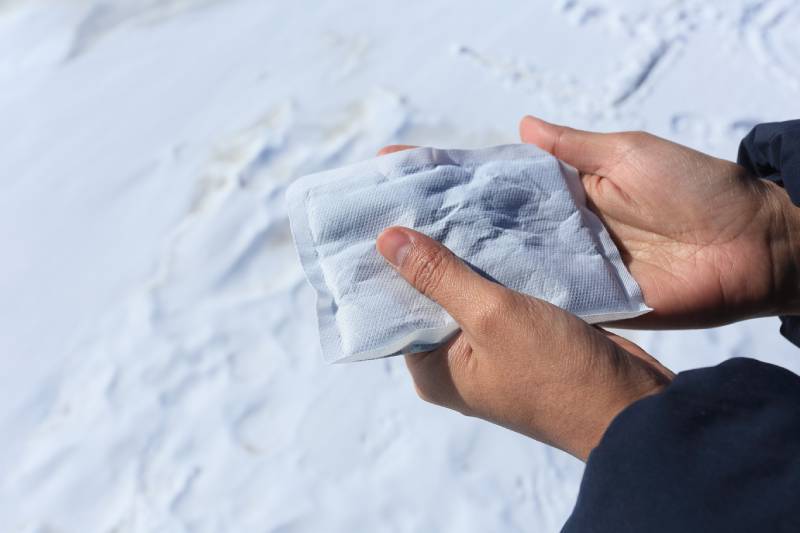Anisocoria in Cats: Symptoms, Causes, and Care (Vet Answer)

Updated on

Cats have some of the animal kingdom’s most beautiful and distinctive eyes. One characteristic that makes their eyes particularly unique is the shape of their pupils. A cat’s pupils change from vertical slits to completely round, depending on their mood and the ambient lighting.
The pupil is the opening within the iris (the colored part of the eye) that allows light to pass through the eye to the retina. Based on the body’s needs, the iris controls the pupil’s size by dilating or enlarging to increase the amount of light that enters the eye or by constricting or narrowing to allow less light in.
What Is Anisocoria?
Normal pupils work in unison—when one constricts or dilates, so should the other. Therefore, normal pupils are the same size. Anisocoria is a condition where the pupils of a cat’s eyes are different sizes. In some cases, the larger pupil is the abnormal one, while in other cases, the smaller pupil is abnormal.

What Are the Symptoms of Anisocoria?
Cats with anisocoria have pupils that are two different sizes. Depending on the underlying cause of anisocoria, affected cats can show other symptoms, too. If anisocoria is caused by an ocular (eye) disease, other signs may be present, such as redness of the eye, a cloudy cornea (the clear part of the eye), eye discharge, or blinking and squinting from pain.
If the cause of anisocoria is neurological, other signs, such as a head tilt, abnormal behavior, altered consciousness, drooping of the upper eyelid, and a protruding third eyelid may be seen.
What Are the Causes of Anisocoria?
Anisocoria can be the result of either an ocular or a neurological disease.
- Iris atrophy: A thinning of the tissue of the iris, which leads to the appearance of ‘”holes.” This condition is usually due to age-related degeneration of the iris, but can also be caused by trauma, glaucoma, or chronic uveitis.
- Iris hypoplasia: A condition in which the iris does not develop properly
- Glaucoma: A disease in which the pressure within the eye is elevated
- Uveitis: Inflammation of the middle layer of the eye, including the iris. This is a severely painful disease.
- Corneal ulcers: A painful defect or wound on the surface of the cornea (the clear part of the eye)
- Posterior synechiae: Strands of tissue that adhere to the iris and the lens capsule of the eye. The pupil appears larger and may be misshapen. This condition may develop following uveitis.
- Retinal disease: Such as one-sided retinal detachment
- Head trauma: Trauma to the head, which may result in hemorrhage and increased pressure within the skull, leading to anisocoria
- Brain tumors: Brain tumors can cause compression, leading to anisocoria
- Feline spastic pupil syndrome: A condition that may be seen in cats infected with Feline Leukemia Virus
- Other infectious diseases, such as Feline Immunodeficiency Virus (FIV) and toxoplasmosis
- Horner’s Syndrome: A neurological disorder affecting the eye and facial muscles. Some causes for Horner’s Syndrome include a middle ear infection, trauma, and tumors
How Do I Care for a Cat with Anisocoria?
If your cat develops anisocoria, it’s vital that you seek veterinary care as soon as possible. It’s best not to wait and see if the condition improves on its own, as some diseases causing anisocoria are extremely painful and can result in permanent blindness if left untreated. Other conditions can be life-threatening without appropriate veterinary care.
At the clinic, your veterinarian will perform a physical examination on your cat, including an eye and neurological exam, to determine the underlying cause of anisocoria. It may also be necessary to do blood tests to check for underlying systemic diseases that can be responsible, such as Feline Leukemia Virus (FeLV) and Feline Immunodeficiency Virus (FIV).
In some cases, referring your cat to a veterinary ophthalmologist may be necessary for further testing. Once your veterinarian has made a diagnosis, they’ll discuss a treatment plan with you. The treatment depends on the underlying cause of the anisocoria.
Some causes of anisocoria, such as iris atrophy and iris hypoplasia, don’t require treatments, while other conditions require eye drops, pain medication, or antibiotics.
To ensure the best outcome for your cat, follow the treatment plan closely. Administer the prescribed medication at the correct times and take your cat for regular follow-ups as advised by your veterinarian.
Frequently Asked Questions (FAQs)
Can Anisocoria Cause Blindness?
Some conditions causing anisocoria, such as glaucoma, corneal ulcers, and uveitis, may result in blindness if left untreated.
Is Anisocoria Painful?
Anisocoria itself is not painful. However, some diseases causing anisocoria, such as trauma, uveitis, glaucoma, and corneal ulcers, can be painful.
What Is the Prognosis for Cats with Anisocoria?
The prognosis depends on the underlying cause of anisocoria. Some diseases are treatable, with affected cats fully recovering, while others require lifelong management. Unfortunately, some conditions causing anisocoria are life-threatening and carry a poor prognosis.
Conclusion
Anisocoria may be caused by several underlying conditions, ranging from minor to life-threatening. Without knowing the underlying cause of anisocoria, it’s impossible to know whether it’s an emergency or not.
For that reason, it’s best to err on the side of caution and seek urgent veterinary care if you notice that your cat’s pupils are different sizes.
Featured Image Credit: HNP, Shutterstock












